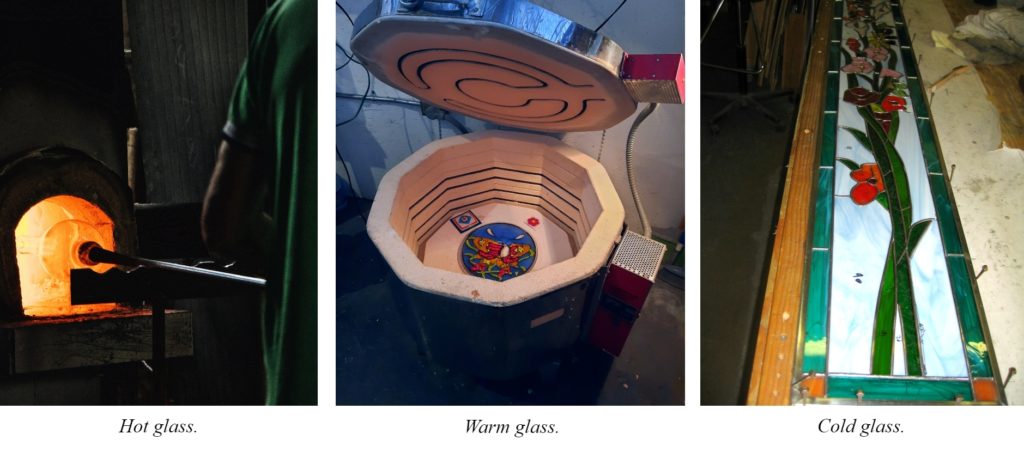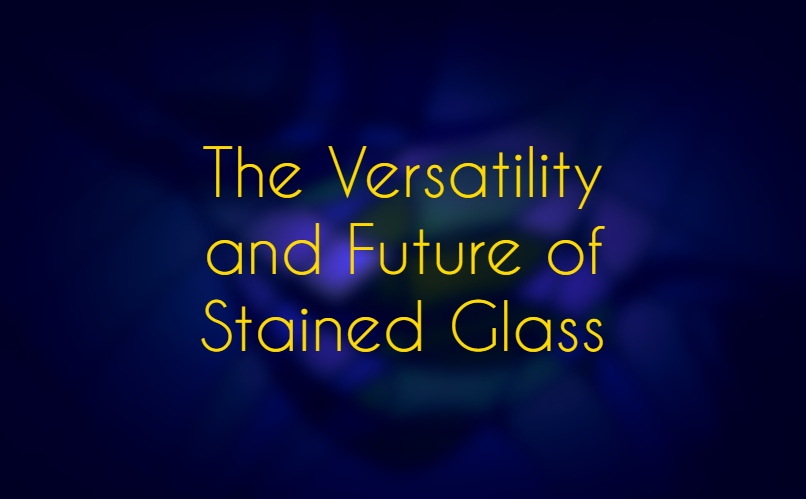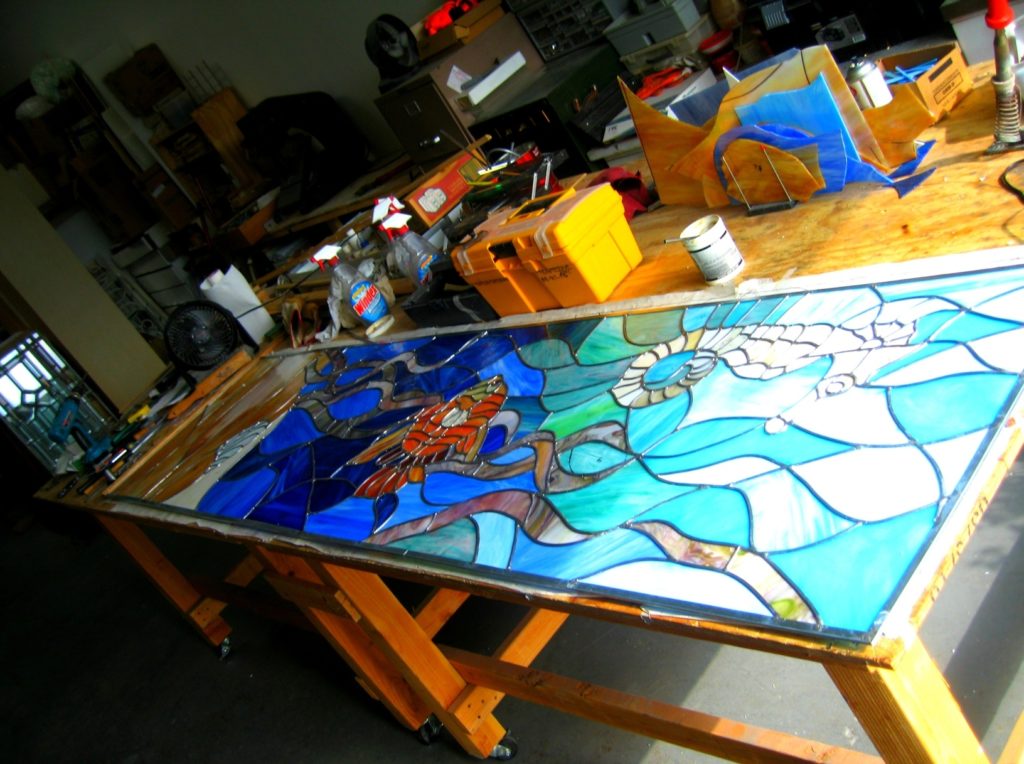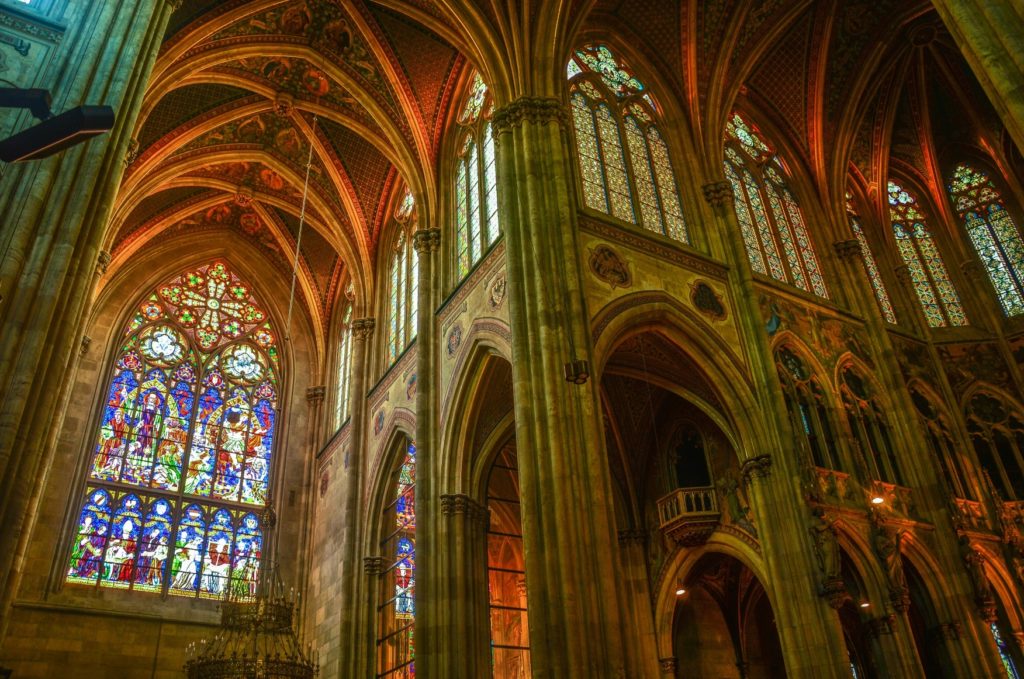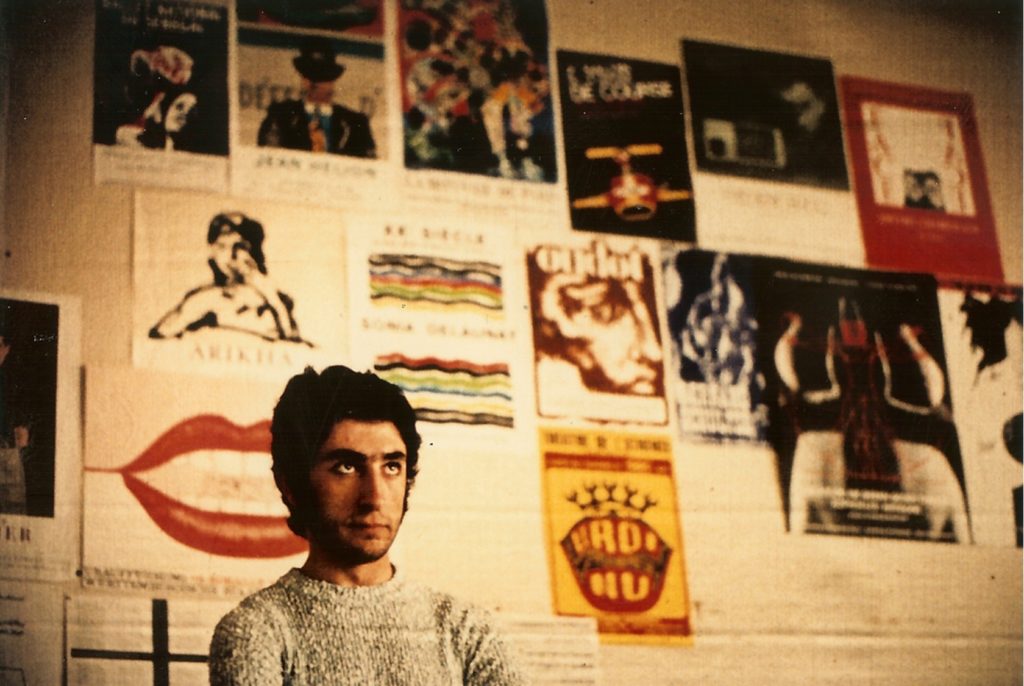When using glass as an artistic medium, it can be classified into three categories: HOT, WARM and COLD GLASS.
HOT GLASS refers primarily to glassblowing, where the artist manipulates a rod with a mass of molten glass at the end of it over a furnace, shaping it into various forms such as vases, jugs, drinking vessels, etc. An intense degree of heat is required to accomplish this, hence the name. The town of Murano, Italy is famous for this.
WARM GLASS uses the heat of a specialized kiln to melt and shape glass. A KILN is an industrial oven or furnace for the firing of various components. It still uses heat, but it’s not as scorching as that of the glassblower’s furnace, thus the name. WARM GLASS is composed of three sub-categories:
FUSING – Melting together pieces of joined glass into one creation.
SLUMPING – Melting and shaping glass over or into a mold, causing it to slump.
CASTING – Melting glass pieces that have been placed inside a mold, thus conforming it to its shape.
As heat is the principle component of creating and shaping glass, COLD GLASS refers to methods which deal with the manipulation of glass at room temperature, long after it has cooled and solidified into shape. Stained/leaded glass, sandblasting and etching would come under this heading.
We at Progressive Art Stained Glass Studio specialize in the cold glass art of stained/leaded glass. But we also do warm glass in our kiln and are able to make custom pieces which we can then incorporate into leaded glass projects.
